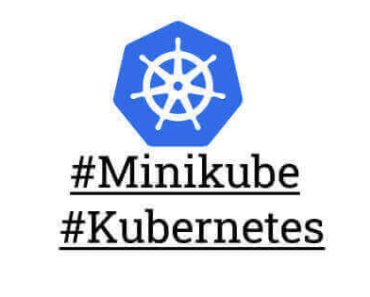Kubernetes is a powerful container orchestration platform that enables administrators to easily manage, deploy, and scale their applications. As such, Kubectl, the command-line tool used to interact with Kubernetes clusters, is a powerful tool for Kubernetes administrators to master.
In this article, we will discuss 10 must-know Kubectl commands that every Kubernetes administrator should be familiar with.
10 Must-Know Kubectl Commands for Kubernetes Administrators
1. kubectl get
The “kubectl get” command is the most basic Kubectl command that is used to retrieve information about Kubernetes objects. It can be used to print out the details of a single object, such as a Pod or Service, or a list of objects, such as ReplicaSets or ConfigMaps.
The command is structured as follows:
kubectl get <object-type> <object-name>
For example, to get the details of a Pod with the name “nginx”, you would run the following command:
kubectl get pod nginx
Example Output of the command
controlplane ~ kubectl get pod nginx NAME READY STATUS RESTARTS AGE nginx 1/1 Running 0 18s
2. kubectl describe
The “kubectl describe” command is used to get detailed information about a Kubernetes object. It can be used to get more information than the “get” command, such as the status of the object, labels, and events.
The command is structured as follows:
kubectl describe <object-type> <object-name>
For example, to get detailed information about a Pod with the name “nginx”, you would run the following command:
kubectl describe pod nginx
Example Output of the command
controlplane ~ kubectl describe pod nginx Name: nginx Namespace: default Priority: 0 Service Account: default Node: node01/10.53.211.9 Start Time: Fri, 03 Feb 2023 15:56:39 -0500 Labels:Annotations: Status: Running IP: 10.244.1.2 IPs: IP: 10.244.1.2 Containers: nginx: Container ID: containerd://8e8cc2e3d27231a9394a36044f99c7660e52d42af89c662dc0f2057428aa9f1e Image: nginx ................. ................ Events: Type Reason Age From Message ---- ------ ---- ---- ------- Normal Pulling 5m28s kubelet Pulling image "nginx" Normal Pulled 5m22s kubelet Successfully pulled image "nginx" in 5.066662663s (5.066679715s including waiting) Normal Created 5m22s kubelet Created container nginx Normal Started 5m22s kubelet Started container nginx
3. kubectl create
The “kubectl create” command is used to create new Kubernetes objects. It can be used to create Pods, Services, Deployments, namespace, and more. You can use this command to directly create objects directly or from YAML files.
The command is structured as follows:
kubectl create <object-type> <object-name> kubectl create -f <filename>
For example, to create a namespace called “myns” directly and create a pod niginx from a configuration file named “nginx.yaml ”, you would run the following commands:
kubectl create namespace myns
kubectl create -f nginx.yaml
Example Output of the command
controlplane ~ kubectl create namespace myns namespace/myns created controlplane ~ kubectl create -f nginx.yaml pod/nginx created controlplane ~ kubectl create deployment nginx --image=nginx deployment.apps/nginx created
4. kubectl edit
The “kubectl edit” command is used to edit existing Kubernetes objects. It can be used to change the configuration of an existing object, such as the labels or environment variables of a Pod or Service. You can also use this command to directly change some parameters of deployments.
The command is structured as follows:
kubectl edit <object-type> <object-name>
For example, to edit a deployment with the name “frontend”, you would run the following command:
kubectl edit deployments frontend
controlplane ~ kubectl edit deployments frontend deployment.apps/frontend edited
Kubernetes Interview Questions for Beginners [Answers Included]
5. kubectl delete
The “kubectl delete” command is used to delete existing Kubernetes objects. It can be used to delete Pods, Services, Deployments, and more. The command is structured as follows:
kubectl delete <object-type> <object-name>
For example, to delete a deployment with the name “frontend” or to delete a pod named “nginx”, you would run the following command:
kubectl delete deployments frontend
kubectl delete pod nginx
controlplane ~ kubectl delete deployments frontend-deployment deployment.apps "frontend-deployment" deleted controlplane ~ kubectl delete pod nginx pod "nginx" deleted
6. kubectl logs
The “kubectl logs” command is used to view the logs of a container in a Pod. It can be used to view the output of a specific container or to follow the logs of a container in real-time. The command is structured as follows:
kubectl logs <pod-name> -c <container-name>
For example, to view the logs of a container named “nginx” in a Pod named “nginx”, you would run the following command:
kubectl logs my-pod -c my-container
controlplane ~ kubectl logs nginx -c nginx /docker-entrypoint.sh: /docker-entrypoint.d/ is not empty, will attempt to perform configuration /docker-entrypoint.sh: Looking for shell scripts in /docker-entrypoint.d/ /docker-entrypoint.sh: Launching /docker-entrypoint.d/10-listen-on-ipv6-by-default.sh 10-listen-on-ipv6-by-default.sh: info: Getting the checksum of /etc/nginx/conf.d/default.conf 10-listen-on-ipv6-by-default.sh: info: Enabled listen on IPv6 in /etc/nginx/conf.d/default.conf /docker-entrypoint.sh: Launching /docker-entrypoint.d/20-envsubst-on-templates.sh /docker-entrypoint.sh: Launching /docker-entrypoint.d/30-tune-worker-processes.sh /docker-entrypoint.sh: Configuration complete; ready for start up 2023/02/03 21:13:31 [notice] 1#1: using the "epoll" event method 2023/02/03 21:13:31 [notice] 1#1: nginx/1.23.3 2023/02/03 21:13:31 [notice] 1#1: built by gcc 10.2.1 20210110 (Debian 10.2.1-6) 2023/02/03 21:13:31 [notice] 1#1: OS: Linux 5.4.0-1093-gcp 2023/02/03 21:13:31 [notice] 1#1: getrlimit(RLIMIT_NOFILE): 1048576:1048576 2023/02/03 21:13:31 [notice] 1#1: start worker processes ........... ...........
If you only have one container in the pod, then you can skip the “-c” option.
7. kubectl exec
The “kubectl exec” command is used to execute a command in a container in a Pod. It can be used to run any commands such as “uname”, “ls” or “cat” to view system information, and the contents of files, or view the environment variables of a container.
The command is structured as follows:
kubectl exec <pod-name> -c <container-name> -- <command>
For example, to view the system information of a container named “nginx” in a Pod named “nginx”, you would run the following command:
kubectl exec my-pod -c my-container — env
controlplane ~ kubectl exec nginx -c nginx -- uname -a Linux nginx 5.4.0-1093-gcp #102~18.04.1-Ubuntu SMP Sat Oct 29 06:35:49 UTC 2022 x86_64 GNU/Linux controlplane ~ kubectl exec nginx -- uname -a Linux nginx 5.4.0-1093-gcp #102~18.04.1-Ubuntu SMP Sat Oct 29 06:35:49 UTC 2022 x86_64 GNU/Linux
8. kubectl label
The “kubectl label” command is used to add or remove labels to Kubernetes objects. Labels are used to organize and identify objects and can be used to filter objects based on their labels.
The command is structured as follows:
kubectl label <object-type> <object-name> <label-name>=<label-value>
For example, to add a label with the name “env” and the value “prod” to a Pod with the name “nginx”, you would run the following command:
kubectl label pod my-pod env=prod
controlplane ~ kubectl label pod nginx env=prod pod/nginx labeled
To remove the label from the pod using kubectl command, you can run kubectl label pod nginx env-.
controlplane ~ kubectl label pod nginx env- pod/nginx unlabeled
9. kubectl scale
The “kubectl scale” command is used to scale the number of replicas in a Deployment or ReplicaSet. It can be used to increase or decrease the number of replicas in a Deployment or ReplicaSet.
The command is structured as follows:
kubectl scale <deployment-name> –replicas=<number-of-replicas>
For example, to scale a Deployment named “my-deployment” to 5 replicas, you would run the following command:
kubectl scale my-deployment–replicas=5
controlplane ~ kubectl scale deployment my-deployment --replicas=5 deployment.apps/my-deployment scaled
10. kubectl apply
The “kubectl apply” command is used to apply changes to existing Kubernetes objects or create new ones. It can be used to change the configuration of existing objects, such as the labels or environment variables of a Pod or Service.
The command is structured as follows:
kubectl apply -f <filename>
For example, to apply changes from a configuration file named “my-config.yaml” to a Pod with the name “my-pod”, you would run the following command:
kubectl apply -f my-config.yaml
controlplane ~ kubectl apply -f nginx.yaml pod/nginx created
Kubernetes administrators must be familiar with Kubectl commands in order to effectively manage their clusters. In this article, we discussed 10 must-know Kubectl commands for Kubernetes administrators. From the “get” command to the “apply” command, these commands are essential for any Kubernetes administrator to know.
If you would like to see more such Kubernetes tutorials, please subscribe to our free newsletter.




